Saying cheese since 1838
When, in 1838, Louis Daguerre produced a daguerreotype of the Boulevard de Temple in Paris, the long exposure time of over ten minutes meant that the busy traffic of the horse-drawn carriages was not captured. As if by magic, the street was rendered deserted. Well, almost deserted. By chance, two men –a bootblack and a client having his shoes shined- stood still long enough to become the first humans ever photographed. Since that fateful day, the advances of photography have continuously changed the way humans capture each other’s image on camera.
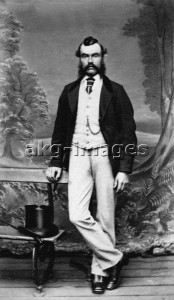
Victorian man in front of a painted landscape.
Studio photo, c.1870.
© akg-images / Archie Miles Collection

Victorian girl in front of a painted background of a library.
Studio photo, c.1865.
© akg-images / Archie Miles Collection
Most early daguerreotypes had sitters arranged with their elbows or heads supported, often by hidden arm rests or neck braces, to counteract even the slightest movement. The result was a series of rather stiff and lifeless poses. Victorian photographers also relied heavily on props from the genre of painted portraiture, such as pillars and drapery, further adding to the stilted and staged feeling of these portraits. An entire generation of Victorians has been portrayed in such a serious manner, that we are surprised by the candid and light-hearted photographs from this era that we occasionally come across. These rare ‘snapshots’ give us a rare glimpse into Victorian daily life outside of the photographer’s studio.
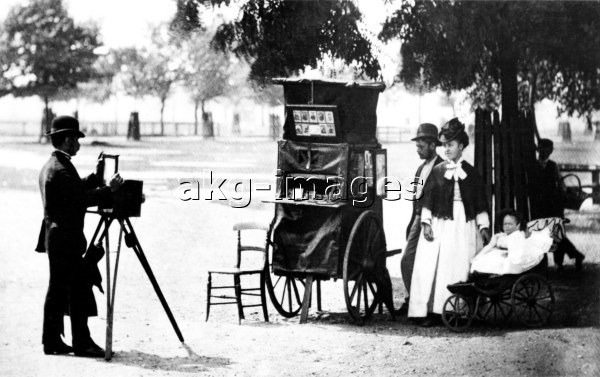
A photographer on Clapham Common, England.
Photograph, 1877.
© akg-images / Francis Frith Collection
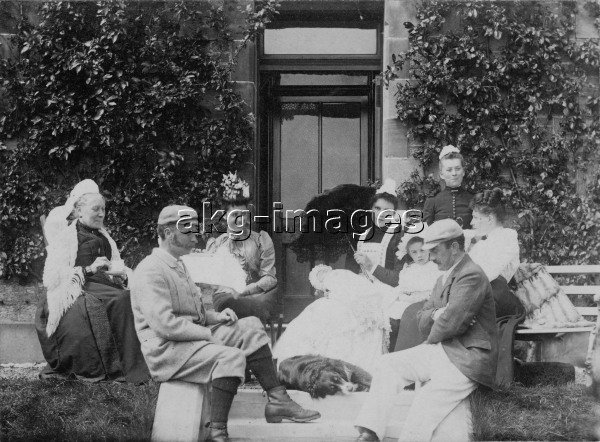
Family with their domestic staff.
Photo (England), 1889.
© akg-images / Archie Miles Collection

Young woman wringing out her wet dress at the seaside in Atlantic City, USA.
Stereoscopic photograph, 1897.
© akg-images
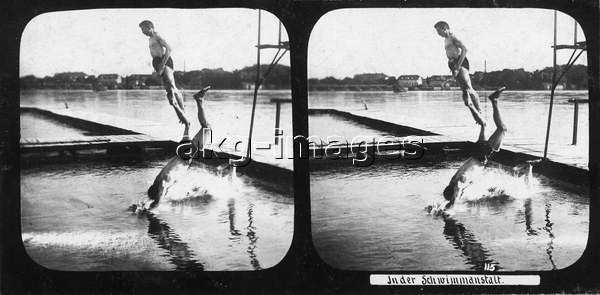
Two men diving into the water.
Stereoscopic photograph, 1900.
© akg-images
By the early 20th century, advances in camera equipment and processing techniques had resulted in much shorter exposure times, allowing photographers to capture their sitters in more natural poses. Smaller cameras were also introduced onto the market, making photography accessible to a wider audience and enabling more and more images to be taken outdoors. The Edwardian era hence saw a much more informal approach to portrait photography, with many amateurs beginning to pick up their cameras. The resulting images appear unexpectedly modern to our eyes. It is hard to believe that the photographs below were taken over one hundred years ago!

Female tattoo artist Maud Wagner, Los Angeles, USA.
Photo, c. 1907.
© akg-images
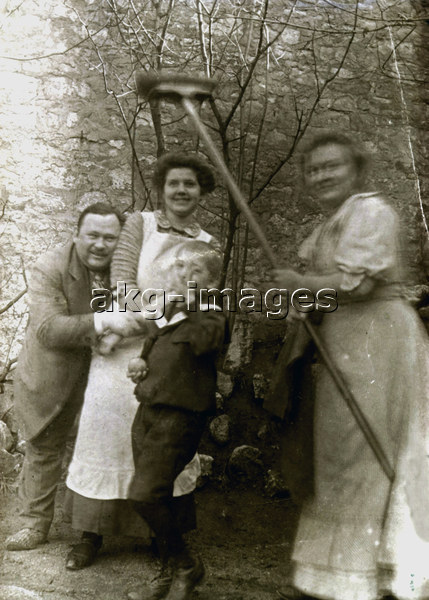
Married couple with child and mother-in-law swinging a broomstick.
Photo (Berlin, Germany), 1912.
© akg-images
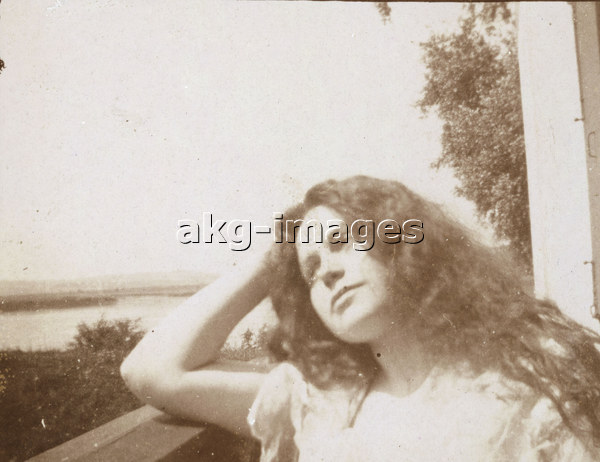
Woman in a dreamy pose on a balcony.
Amateur photo, c. 1910.
© akg-images
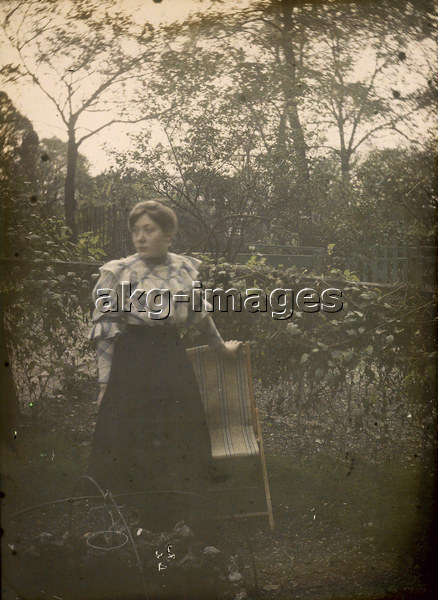
Young woman in a garden, Paris, France.
Amateur autochrome photo, c. 1910.
© akg-images
These photographs capture a timeless humanity – they remind us that even back in 1910 people experienced the same emotions that we do now in 2013, daydreaming on a balcony, lost deep in thought.